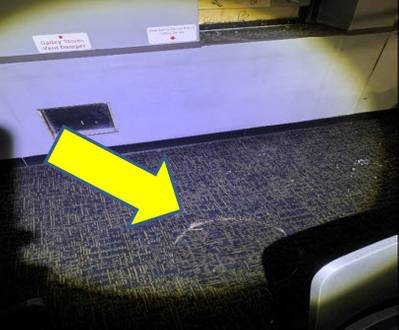US Coast Guard Warns on Open Flames and Hidden Hatches
The US Office of Investigations and Casualty Analysis Commandant has released US Coast Guard Marine Safety Alert 07-23, Critical Insight from Ongoing Investigations into Small Passenger Vessel Fires.
The Safety Alert was prepared in response to multiple ongoing investigations being conducted by the U S Coast Guard and the National Transportation Safety Board (NTSB) into fires onboard two certificated small passenger vessels. Both vessels sustained millions of dollars in structural damages.
The alert highlights the risk of the open flames that can be used during dinner cruises. These include liquid paraffin fueled candles as table decorations and wax birthday candles on desserts. Battery powered lights offer an inexpensive alternative to open flamed table lighting.
Sterno® cans are used to heat food and coffee. These cans will remain hot for an extended period after extinguishment and should be allowed to cool before moving or storing. Operators should also consider flameless heating units or air-activated warmers instead.
Operators of small passenger vessels are also urged to consider alternatives to combustible trash receptacles. The NTSB report, NTSB/MAR-20/031, on the fire onboard Conception, notes the danger: “Neither the Old T nor the New T regulations allow for these types of trash cans to be used in passenger bunkrooms and instead require that trash cans be constructed of non-combustible materials. New T regulations extend the prohibition on combustible trash cans to all compartments, but only apply to existing (Old T) vessels when the trash cans are replaced.”
The NTSB report also states: “Polyethylene trash cans are highly combustible and cannot contain a fire originating from within.” Operators are urged to find alternatives, such as non-combustible metal trash cans.
In one of the fires that prompted the new safety alert, firefighters were unable to locate the engine room escape hatch on the main deck of the vessel. Evidence in the other fire also indicated that circular hatches in the main deck were covered with the same patterned carpet, making the location hard to distinguish. While regulations do not require additional marking, hazard tape or other floor marking tapes are recommended to clearly delineate their location.
In another case, combustible cardboard boxes and plastic storage bins were stored near potential ignition and heat sources. Operators should inspect machinery spaces to ensure that combustible materials are properly stored as far away as possible from potential sources of ignition, including the vessel’s engines and machinery.












